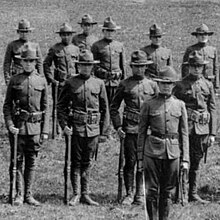

Padma Sundar Malla (1890–1974) (Nepali: पद्मसुन्दर मल्ल) was Nepal's first electrical engineer and the first Nepalese to visit the United States. He pioneered the generation of electricity in Nepal which provided power to the country's emerging industrial sector.
Early life
Padma Sundar was born at Khauma Tol, Bhaktapur, the third among four brothers. His eldest brother was renowned educationist and author Jagat Sundar Malla. The family moved to Asan in Kathmandu so they could study at Durbar High School. Padma Sundar was inspired to go to Japan for higher studies after meeting with Japanese Buddhist monk and traveler Ekai Kawaguchi in Kathmandu.
Japan and America
In 1916, Padma Sundar and his elder brother Jagat Sundar went to Kolkata, India and secretly sailed for Japan as the government would not have given them permission to do so. The Rana regime disapproved of the general public getting an education. In Japan, Padma Sundar enrolled at the Tokyo Institute of Technology. His brother returned after making arrangements for his study and stay.
After obtaining a Bachelor of Science degree in Tokyo, he teamed up with a few Japanese friends and set sail for America for further studies. He joined the University of Michigan and studied electrical engineering, also earning the distinction of being the first Nepalese in the US.
While a student at the University of Michigan, he joined the Reserve Officers' Training Corps (ROTC) as a cadet. In 1922, he received his degree in electrical engineering.
Electrical engineer
When Padma Sundar returned to Nepal in 1925, he was not allowed to enter Kathmandu for having travelled abroad without permission. So he moved to Kurseong in West Bengal, India. In 1933, he set up his first hydropower station known as the Faji hydroelectric project which supplied energy to Kurseong.
The Nepal government sent for Padma Sundar in 1939, and named him the chief engineer of the Morang Hydroelectric Company. He designed the power station that supplied energy to Biratnagar Jute Mill, Biratnagar. He also designed other plants in Birgunj and Dharan.
Honors
In 1941, Padma Sundar was made an associate member of the Institution of Electrical Engineers, a British professional body.
Padma Sundar moved back to Kathmandu in the 1950s where he lived the rest of his life. He has been called the "father of Nepalese hydropower" for his pioneering work.
References
- Tuladhar, Kamal Ratna (26 April 2009). "The first Nepali in America". The Kathmandu Post. p. 6.
- Savada, Andrea Matles, ed. (1991). "Education under Rana Rule". Nepal: A Country Study. U.S. Library of Congress. Retrieved 24 July 2013.
- "Pioneer Nepali Students in Japan - A Century Ago". Embassy of Japan in Nepal. Retrieved 23 July 2013.
- Tuladhar, Kamal Ratna (26 April 2009). "The first Nepali in America". The Kathmandu Post. p. 6.
- University of Michigan (1920). Proceedings of the Board of Regents. UM Libraries. p. 516. Retrieved 23 July 2013.
- Dhungel, Dwarika Nath; et al. (2006). Nepal, Conflict Resolution and Sustainable Peace: Foreign policy and development issues. Institute for Integrated Development Studies. p. 76. ISBN 9789993376897.
- Honningsvåg, Bjørn (2001). Hydropower in the New Millennium. A.A. Balkema. p. 3. ISBN 9789058091956.
- Tuladhar, Kamal Ratna (26 April 2009). "The first Nepali in America". The Kathmandu Post. p. 6.